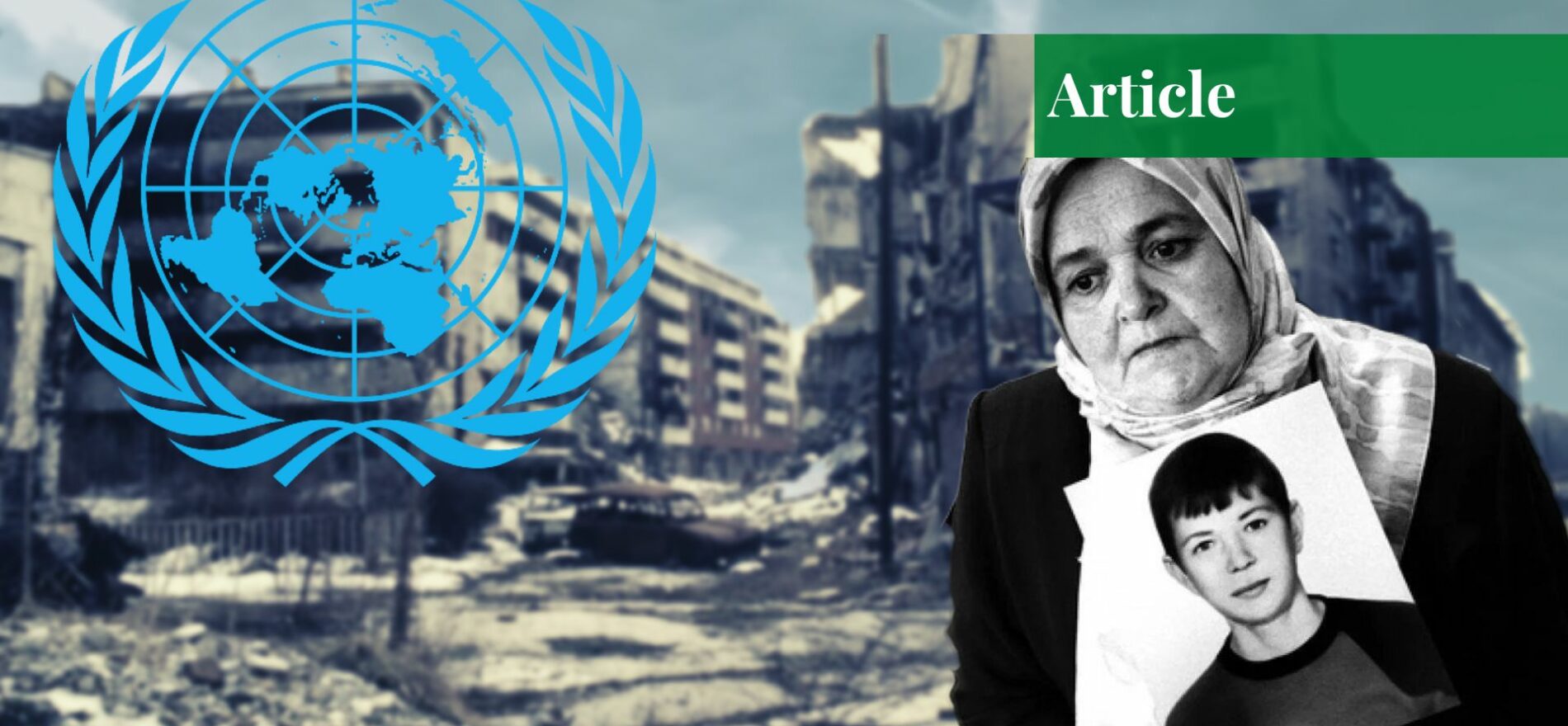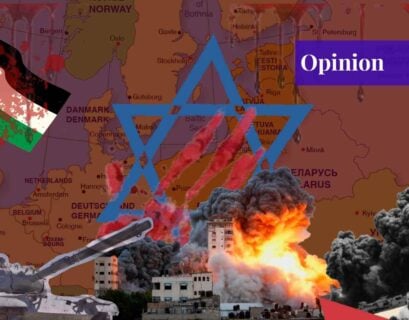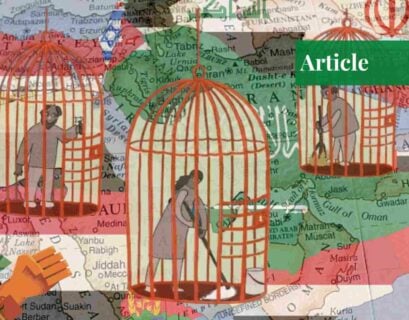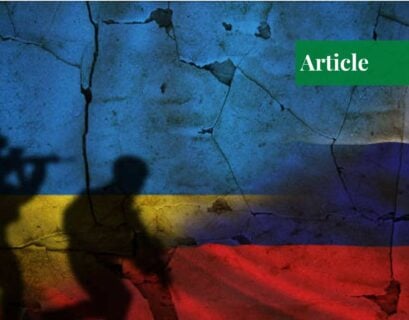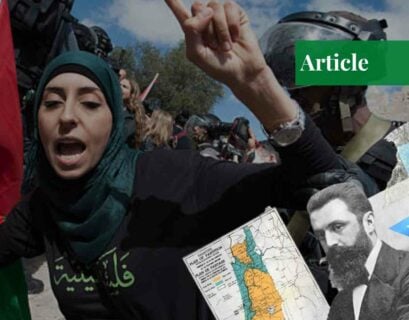Mahnoor Najeeb completed her Bachelor's in Public Policy from NUST. She has a keen interest in global politics and international conflicts.
Background
Bosnia, which is an independent state was once part of the Federal Republic of Yugoslavia. The Federal Republic of Yugoslavia was a former country in Southern Europe that consisted of 6 nations: Serbia, Bosnia-Herzegovina, Croatia, Montenegro, Macedonia, and Slovenia. The history of Yugoslavia is marked by bloody and outrageous events of integration and disintegration.
In 1918, the Kingdom of Yugoslavia was created with a merger of the Kingdom of Serbia, the Kingdom of Montenegro, and territories of the Austrian-Hungarian Empire. However, the Kingdom of Yugoslavia ended in 1941 when the Axis powers (Nazi Germany and Fascist Italy) took control of these nations and imposed puppet governments. However, in 1945, when the Axis powers lost in World War II, the kingdom was re-established as a “socialist state” comprised of 6 republics.
This marked the start of the socialist state of Yugoslavia which was ruled by Josip Broz Tito until his death in the 1980s. Tito’s death facilitated the fall of Yugoslavia. Issues were already boiling up under Tito’s rule, but nationalist movements and economic decline gained momentum after his death. In the 80s and 90s, Yugoslavia began to fall apart due to economic instability, oppressive communist policies, and ethnic conflict.
States began declaring their independence from Yugoslavia and in 1992 Bosnia declared independence. Civil strife had already erupted between Croatia and Serbia and now Bosnia was also engulfed in one of the bloodiest conflicts the world had ever witnessed, culminating in the Bosnian genocide.
UN Peacekeepers
Peacekeeping forces were originally established to maintain peace after a ceasefire or resolution was established in an international conflict. They are a neutral force to resolve conflicts at the behest of the warring parties. The peacekeepers are not recruited or trained by the UN, rather the member countries of the UN contribute troops, police, and military experts. The prime purpose of these peacekeepers is to ensure peace, provide humanitarian aid, and rebuild and restore nations and governments. They are also responsible for political and social rehabilitation.
United Nations has launched multiple peacekeeping missions in various war-torn nations and to the misfortune of those nations and their people, UN missions have failed miserably to ensure peace and protect the people. Some evident examples of its failures include the unsuccessful peacekeeping mission of the UN in Congo in 1999, Somalia in 1993, Rwanda in 1994, and Bosnia during the 1990s.
UN Peacekeeping Mission in Bosnia
As soon as the war broke out in Bosnia in 1992, the leadership of Bosnia appealed to the United Nations to help but they refused, and Serbs went from town to town to execute boys and men. Hundreds of women were raped and placed in concentration camps. Resolutions after resolutions were passed in the UN, condemning the onslaught by the Serb forces, but the most powerful member states of the UN did nothing.
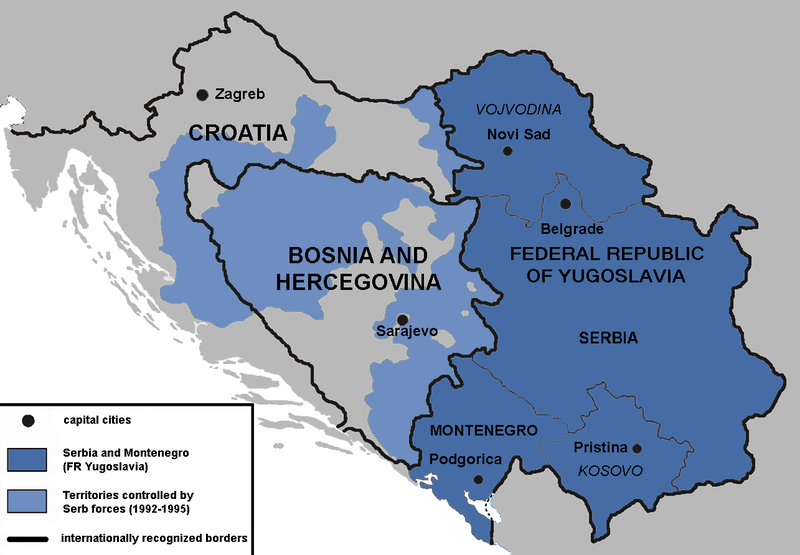
A ray of hope emerged for Bosnians when on March 12th, 1993, General Philippe Morillon, the UN peacekeeping commander in Bosnia, brought long-awaited medical aid, food, and protection. With a plethora of refugees, General Morillon instantly realized that it would be harder to leave Srebenica the same night as they had planned.
In order to stabilize the situation in Bosnia, he proclaimed that the people were now “under the protection of UN forces.” While this statement calmed down the Bosnians, it created panic in the headquarters of the United Nations because the statement was made without any official commands and clearance.
United Nations Protection Force (UNPROFOR) was also formed as a peacekeeping mission in Bosnia. Although, the peacekeepers succeeded in the provision of humanitarian aid but awfully failed to end the conflict and restore peace between the warring parties. It was not only a failure of the UN peacekeeping mission but also a devastating humanitarian loss.
Approximately, 25,000 UN peacekeepers were involved in the Bosnian conflict and during this time, 110 of them were killed, 831 were wounded, and hundreds of them were taken as hostages. Moreover, by April 16th, 1993, Srebrenica was declared a “safe zone” under Resolution 819. Following this, 5 more areas were declared as “safe zones” as Resolution 824 was passed. The zones included the areas of Gorazde, Bihar, Sarajevo, Tuzla, and Zepa. It meant that people in these areas shall be protected even if it involved the use of force.
“Safe Zones” under Threat
The peacekeepers of the UN were placed in safe zones primarily to protect the people in these regions, and it is where they failed miserably. Not a single “safe zone” was left where the Serb forces did not launch any bombs and do heavy shelling. By 1995, the Serb forces had launched attacks in all the “safe zones,” carrying out genocide and displacing hundreds and thousands of Bosnian men, women, and children.
Bihac
Bihac was one of the safe zones declared through United Nations Security Council Resolution 824. This safe zone was constantly under attack through mortar fire, air strikes, and tank incursions. Even though UN peacekeepers were placed in this region, they failed to stop the Serbian forces. These mass murders and attacks—part of the Bosnian genocide—only came to an end when the Bosnians and Croats joined hands and launched Operation Storm in early August which relieved this enclave.
Tuzla
Tuzla was declared a safe zone along with Bihac and unfortunately, Tuzla experienced the same misfortune as that experienced by Bihac. In the May of 1995, several shells were fired by the Serb forces, often known as the Army of Republika Spraska (VRS). 71 civilians were killed and 240 wounded as a result of this heavy bombing.
Srebenica
The area of Srebenica underwent the worst episode of bloodshed within Europe since World War II. In March 1995 Radovan Karadžić, the president of the self-declared autonomous Republika Srpska (Bosnian Serb Republic), directed his military forces to “create an unbearable situation of total insecurity with no hope of further survival or life for the inhabitants of Srebrenica.”
A food embargo was also imposed by the Serbs that compelled a lot of Bosnian fighters to flee from the area. In June, after a few skirmishes, Serb forces launched an operation, code-named Krivaja 95, which manifested into a massacre that can only be described as a Bosnian genocide. By July 1995 a full-scale series of bombing, shelling, and mortar attacks had begun by the Serbs. The killings in Srebenica were nothing but a massacre.
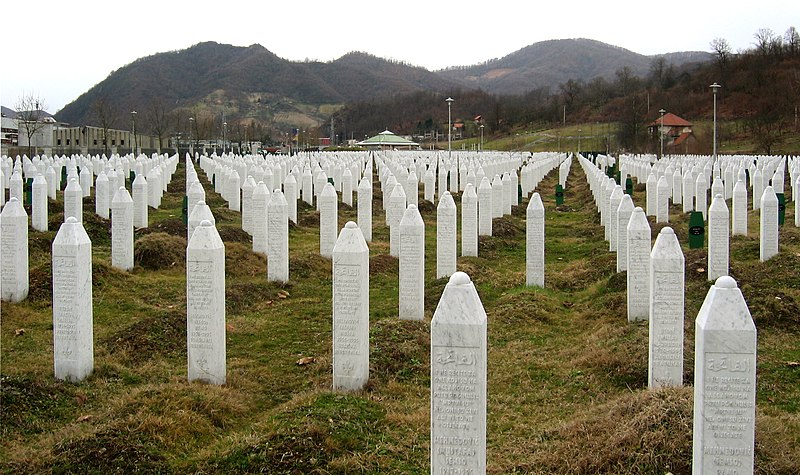
Approximately 7,000 Bosnian boys and men were killed and more than 20,000 people were expelled and displaced. Amidst chaos and violence, thousands of people fled to nearby areas where UN peacekeepers were stationed. Unfortunately, the peacekeepers had no vigor to fight the Serbs and to give protection to the displaced Bosnians. The peacekeepers eventually surrendered, and this further intensified the aggression of the Serbs.
Zepa, Gorazde and Sarajevo
One after the other, all of the safe zones fell into the hands of the Serbs and out of the control of the UN peacekeepers. The area of Zepa was taken by the Serbs by July 1995, leading to the death of 116 Bosnians, and the rest of the population was expelled from the town. Similarly, the town of Sarajevo experienced heavy casualties. The attacks by artillery and machine guns led to the destruction of gas, water, and electricity supplies.
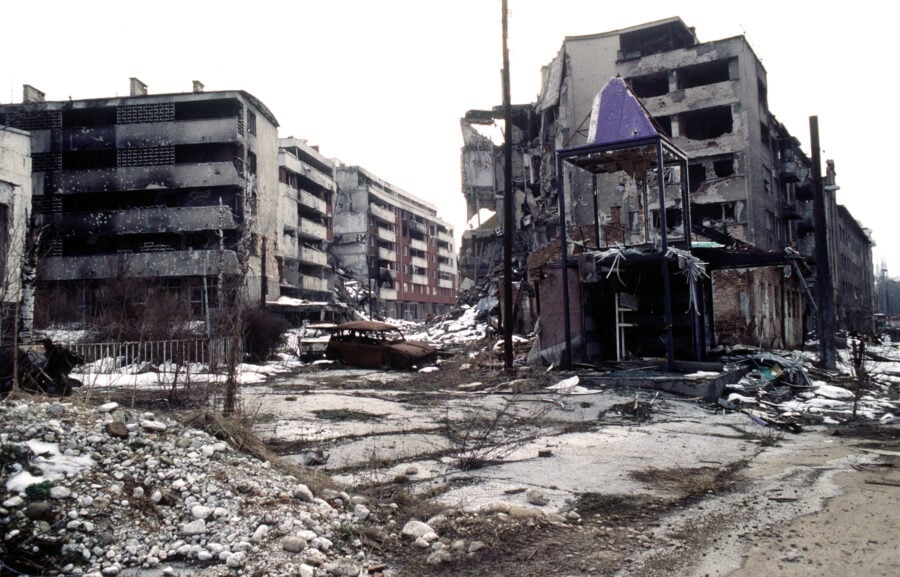
As a result, the UN requested NATO forces to launch airstrikes on Serb artillery positions surrounding the city. Gorazde stayed protected because of counter-offensive attacks by NATO against the Serbs. However, in 1995, Gorazde was the site of the capture of 350 UN peacekeepers held by VRS. The peacekeepers were placed at strategic locations by the VRS to protect Serbs from NATO airstrikes.
Dayton Peace Accords
The immense humanitarian loss and bloodshed finally compelled the West to get involved in the peace process and put an end to years of violence and injustice happening in Bosnia. With all the safe zones fallen into the hands of the Serb forces, NATO started its airstrikes on Serbian areas. All the warring parts were already drained, and these airstrikes weakened Serbian forces too.
This coercion mechanism adopted by the West facilitated the peace process and by September 1995, Richard Holbrooke succeeded in getting an agreement signed by Radovan Karadžić and Ratko Mladić, leaders of the Bosnian Serbs to end the conflict and lay the framework for peace talks in Dayton, Ohio.
On November 1st, 1995, the conference began. Bosnian President Alija Izetbegović, Serbian President Milošević, Croatian President Franjo Tudjman, and representatives from the United States, the United Kingdom, France, Germany, Italy, Russia, and the European Union (EU) met at the Wright-Patterson Air Force Base on the outskirts of Dayton, Ohio. The peace talks were led and headed by Richard Holbrooke, Assistant Secretary of the State.
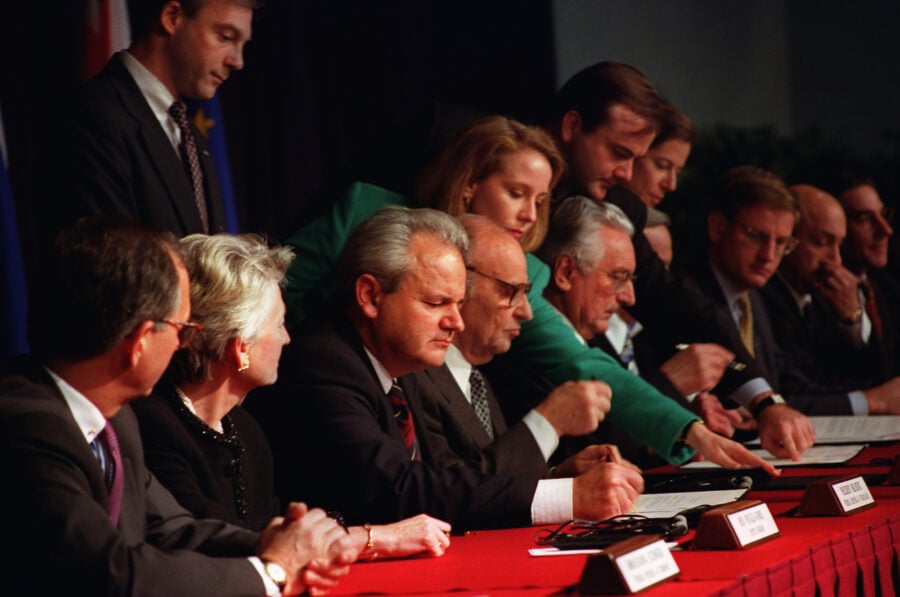
After 17 days of negotiation and re-drawing of plans, a final agreement was reached to ensure peace in the territory of Bosnia. It was decided to keep Bosnia-Herzegovina as one country but divided into 2 districts: Bosniak-Croats Federation and the Republika Srpska. In addition to defined territories, the agreement also made all the parties agree to respect human rights and that of refugees and displaced people. The agreement also paved way for the arrival of 66,000 strong NATO peacekeeping implementation forces (IFOR).
Conclusion
The Dayton Peace Accords proved successful to end the bloodiest conflict in Europe after World War II. The International Criminal Tribunal for the Former Yugoslavia was established before the Bosnian genocide to investigate the military conflict in the state. It concluded the Bosnian ethnic cleansing and widespread mass killings as a “genocide” and declared the Serb leaders as the main perpetrators of the conflict.
However, the United Nations and other Western nations also accepted their share of the blame for having failed awfully to protect the masses of Bosnia. This conflict was a clear reflection of the failure of the United Nations as an international organization for peace, security, and development.
In a critical interview in 1999, UN Secretary-General Kofi Annan wrote, “Through error, misjudgment and an inability to recognize the scope of the evil confronting us, we failed to do our part to help save the people of Srebrenica from the [Bosnian] Serb campaign of mass murder.”
If you want to submit your articles/research papers/book reviews, please check the Submissions page.
The views and opinions expressed in this article/paper are the author’s own and do not necessarily reflect the editorial position of Paradigm Shift.
